
Roy William Neill’s Frankenstein Meets the Wolf Man (1943) is one of the most famous (how can anyone resist the title and all it promises?) of all Universal horrors—and one of the most disappointing. It was, in fact, the first of those films where (at least by the age of 15) I had to admit that just maybe some of them just weren’t very good. While this odd experiment in cross-pollination is slick and atmospheric—and it certainly has its moments—it’s also something of a compendium of bad ideas made just that much worse by post-production tampering. The idea of combining the studio’s two cash cows was apparently so tempting that no one thought about the drawbacks—not the least of which was the need for a lemon of an answer concerning who wins this horrific grudge match in order not to kill off potential sequels. The real problem was the combination of Curt Siodmak’s screenplay and a director lacking much of a sense of humor—which, in this case, meant Neill apparently didn’t realize how laughably bad Siodmak’s dialogue for the Monster (Bela Lugosi) was. (That no one else did either is remarkable.)
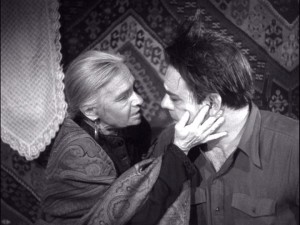
Since the film followed The Ghost of Frankenstein (1942), it followed that the Monster now had Ygor’s brain, was blind, and could talk, which also dictated that Lugosi played the role he so disdained. That’s how it was shot. Then the studio noticed the dialogue and just removed it—and with it all references to the Monster being blind, resulting in a…peculiar looking performance. Throw in the increasingly tiresome Larry Talbot (Lon Chaney) at his morbid, whining worst, and you end up with a mess—an essential mess for horror fans, but a mess all the same.
Those wishing to make a case for the film usually single out the movie’s opening. I’d certainly concede that it’s atmospheric. It’s also not the most exciting thing on Earth. (I won’t even get into whether or not it makes much sense, because it doesn’t. However, since we’re not dealing in the realm of the strictly realistic, we can let that slide.)
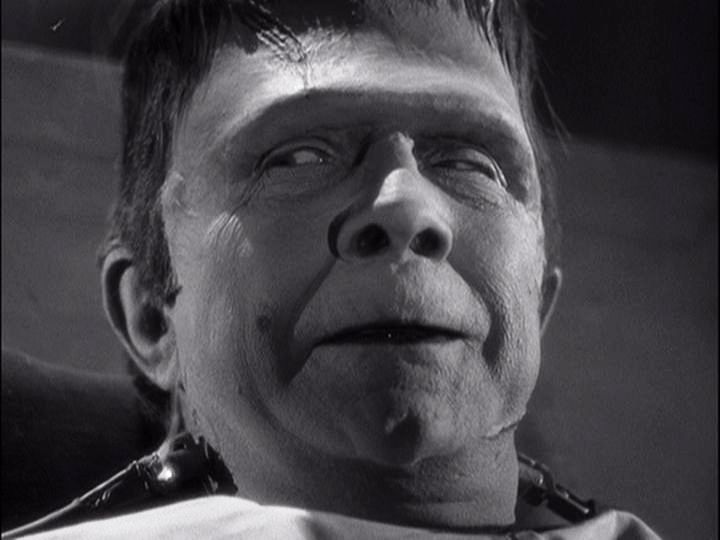
Then—as is the nature of such arguments—the film’s flaws get shunted over to Lugosi’s portrayal of the Monster. I’ve never gotten this, because his take on the Monster, for me, is the most interesting thing in the film—as long as you realize that the big guy is supposed to be blind, which explains the Monster’s movements. (Ironically, it’s almost always—even Brendan Fraser in Bill Condon’s 1998 film Gods and Monsters—Lugosi’s staggering walk with his arms straight out that everybody does when they imitate the Monster.) In fact, Lugosi is the only actor other than Karloff to give the Monster any real personality—making him an actual creature of cunning evil. That portrayal makes sense when you remember that this is no longer the original Frankenstein Monster, but is more properly the Ygor-stein Monster,
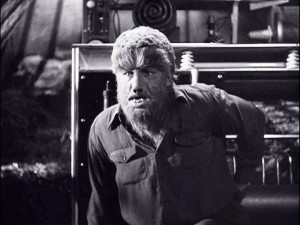
If you’re looking for things to criticize, though, there’s no shortage—unless you’re clinging to your childhood and actually think that musical number was a swell idea. Then there’s the revelation that there’s just not that much you can do with Wolf Man Larry Talbot. He gets covered in yak hair and commits mayhem every so often, but he otherwise is reduced to being this gloomy guy who only wants to die. Considering that as an actor, Chaney isn’t the most lively screen personality to begin with, the schtick gets old pretty fast. And the big fight? Well, it’s on the brief side and it relies a good deal on stunt doubles—the stars appearing mostly in close-ups where they aren’t actually doing much other than looking menacing.
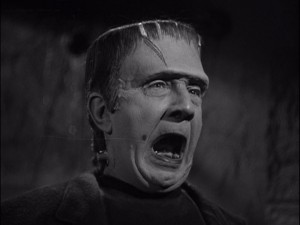
There are compensations, of course. It’s quite a credit to Patric Knowles that he can keep a straight face in light of the things that the script makes him say. Plus, it’s always nice seeing Lionel Atwill and Dwight Frye, even if they aren’t given much to do. (A pretty common occurence in 1940s Universal.) And any movie with Maria Ouspenskaya gets a plus or two, though I’ve always been left wondering why no one seems to worry about her fate at the end of the movie. In fact, she just disappears toward the end of the picture. There’s also a good Hans J. Salter score making everything seem better than it really is. And, as usual, the technical effects are top notch. The only thing is—aren’t townfolk most awfully complacent about that torrent of water that would appear to be headed in their direction?
Oh, well, it’s certainly not a great picture, but it’s occasionally fun. Anyway, you need to see it to get to the next two films in the Frankenstein—and Wolf Man—series, so it can’t be avoided.



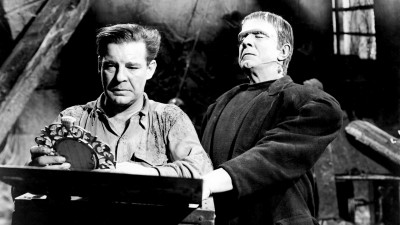
Before you comment
The comments section is here to provide a platform for civil dialogue on the issues we face together as a local community. Xpress is committed to offering this platform for all voices, but when the tone of the discussion gets nasty or strays off topic, we believe many people choose not to participate. Xpress editors are determined to moderate comments to ensure a constructive interchange is maintained. All comments judged not to be in keeping with the spirit of civil discourse will be removed and repeat violators will be banned. See here for our terms of service. Thank you for being part of this effort to promote respectful discussion.